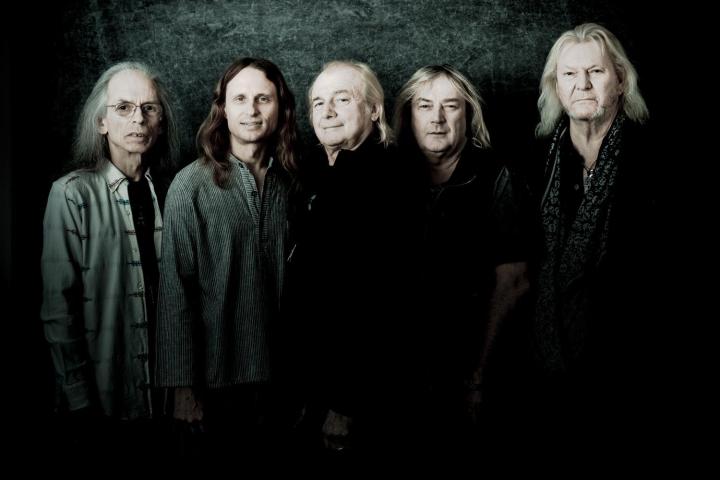
“Listening to an album is a bit like getting a symphony in four movements. You don’t play the third movement before the first one.”
As a lifelong owner of a progressive heart, I found no disgrace in probing all five members of Yes to get the scoop on the band’s ongoing high-fidelity inclinations and what albums they’d love to tackle in full next. Your move, Yesmasters.
What do you feel when you do full albums originally performed by a singer and songwriter of the stature of [original Yes vocalist] Jon Anderson?
Jon Davison (vocalist): He’s always been such an inspiration to me, so I just feel gratitude. That’s the main thing when I’m singing this music: I feel so grateful being in the position I am, and I want to live up to how good this music should sound. I haven’t met Jon yet, but I hope to have that opportunity someday.
Yes has a longstanding reputation for making high-quality recordings, and now much of your back catalog is being remastered in surround sound in 192-kHz/24-bit resolution by Steven Wilson. I think Wilson has done a stellar job with his golden-ear 5.1 remasters of Close to the Edge (1972) and The Yes Album (1971). What do you think of them?
Steve Howe (lead guitarist): Steven has done an amazing job. He’s trying to get as close as he can to the original mixes with what he’s doing with the 5.1. At different times in my life, I’ve liked quadraphonic and 5.1, so it’s really about having the hi-fi experience.

What’s the best Yes song to listen to in 5.1?
Geoff Downes: (keyboardist): “Close to the Edge.” It’s a fascinating piece, almost 20 minutes long. I can’t imagine anyone would write a piece of music like that again. It goes through so many different changes and mood swings. It’s quite an incredible composition, because it doesn’t just settle into a groove; it keeps changing. The main themes keep getting dished up in different ways. And I think that’s also the principle of classical music, in many ways — you have a theme or a motif that’s been developed, and then it comes back in different guises.
What Yes album would you like to hear mixed in surround sound?
Alan White (drummer): Tales from Topographic Oceans (1974). I think that mix will be fantastic, because there’s a lot of interesting percussion on that album, along with quite a few different percussive overdubs — all this kind of crazy stuff Jon Anderson and I dreamed up in the studio. That one’s going to be something to hear.
Time for a semi-loaded question. What other albums in the Yes canon would you want to play live from beginning to end?
Davison: Well, I’d like to do them all, because I like all the classic masterpieces. Drama [1980] would be great since Geoff is in the band. Relayer [1974] would be good too. And I’d love to do Tales from Topographic Oceans if possible. I’d even like to recreate that tour. Yeah, why not?

A live set consisting of a double album that has just four songs on it, one per side, and each averaging 20 minutes in length? I’d vote for that. Could we get that added to the live full-album playlist?
Chris Squire (bassist and Yes co-founder): Maybe for you and three others! (both laugh) When that album was released, we went out and played the whole thing along with Close to the Edge, so it was like a five-album show. We had a lot of energy then.
White: Yes were the pioneers of doing the whole album thing live. When we first went and played all of Tales, they said, “You guys are crazy!” (laughs)
Downes: Drama would be fun since that’s an important album in my life, but I’d certainly like to do 90125 [1983]. That’s a great Yes album. There are some amazing moments on there. Even though it’s a slightly different era of the band, it has all of the building blocks of what Yes music is about. “Changes” is a great song. It’s pretty progressive.
Squire: I like that idea. Obviously, a lot of fans came into the Yes fold in the ’80s, with 90125 [1983] and Big Generator [1987]. We haven’t done much of that material apart from “Owner of a Lonely Heart” every now and again. I would even like to do some of the songs from when we had the eight-piece band on the Union tour [1991-92]. If we were doing an expanded Yes again and Trevor [Rabin, Yes guitarist from 1983-94] was onboard, it would be a lot more feasible. We have such a wealth of material we could do.
Heaven & Earth by Yes will be available July 22.


